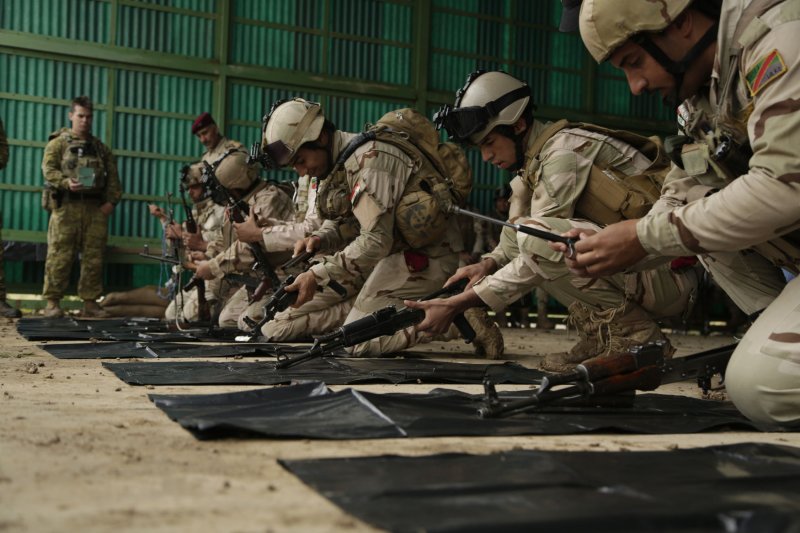As the authorities in Western Europe face up to the increased risk of attacks from Islamic State, arrests have been made in Britain and security operations in Belgium and France, all point to intensive government action against the "new"domestic IS threat.
The popular media narrative is that this is a desperate move from IS as it retreats in Iraq and Syria – but security professionals take a very different view.
There are three elements at work here: the actual state of the war, the Pentagon's plans for a rapid increase in U.S. involvement in the war (including "boots on the ground") and the hidden nature of IS's plans for an expanded war overseas.
Related
IS is certainly under substantial pressure in Iraq and Syria and has lost significant territory in both countries over the past year. This, though, is a very long way from defeat. For a start, whenever the Iraqi army takes back a town or city, the process is invariably much slower than anticipated and, even when it does reclaim territory, it has serious trouble maintaining control. It took well over four months to overrun Ramadi between August and December 2015 – and, four months later, IS paramilitaries are still harrying Iraqi units around the city.
March 2016 saw a new assault on Mosul begin, to great fanfare – but now, and with much less publicity, the Iraqi army has withdrawn in at least temporary disarray, its early advances not only stalling but going into reverse. Meanwhile, IS has actually recaptured a key crossing on the Syrian-Turkish border.
This leads us to the American reaction. The Pentagon regards Mosul as the principal focus of the war against IS in the Middle East and it has become clear that the United States is going to expand its air support for the Iraqis – and that this is evolving more and more into a ground war.
Shadow war
U.S. President, Barack Obama was recently reported to be considering sending an additional 250 Special Forces to operate in Syria and there's every indication that the United States is developing a major "shadow war" against IS, similar to the Joint Special Operations Command operations against al-Qaida in Iraq in 2004-07.
That isn't the best of precedents. While JSOC was credited with hugely damaging al-Qaida, it also helped spawn IS, which has proved to be a much more dangerous successor.
In addition to its expanded use of Special Forces, the Pentagon is increasing the number of regular combat troops fighting IS, regardless of the Obama administration's avowed intent to avoid deploying "boots on the ground."
The U.S. Marine Corps has for many weeks now been operating the first of what may become many forward-based artillery batteries, Firebase Bell, a unit equipped with four M777A2 howitzers. These are heavy-duty artillery pieces, each of which can fire two shells a minute with a range of up to 30km, covering an area of around 2,000 sq km.
IS has already started counterattacking this firebase, killing one Marine and seriously injuring several others at the end of March, but the Pentagon is undeterred and is now looking at setting up more forward artillery positions, which it deems a necessary aid if the Iraqi forces are ever to retake Mosul.
As if to support this, a substantial force of U.S. Marines, the 13th Marine Expeditionary Unit, has just arrived in the Persian Gulf with three large amphibious warfare ships and supporting vessels – a force nearly twice the size of the one it replaces. Meanwhile, B-52 strategic bombers have been moved from the United States to the al-Udeid air base in Qatar.
Long time coming
The expansion of the conflict into what is now likely to become a major ground war comes as Pentagon sources claim that the intensive 20-month air war has killed around 28,000 IS supporters.
The thinking goes that this is why IS has taken the war to the West, first with the Bardo Museum and Sousse attacks on Western tourists in Tunisia, and more recently the destruction of the Russian Metrojet airliner in Sinai and the attacks in Paris and Brussels.
But it's now clear that there is nothing recent about this change and that IS has been developing this strategy for at least two years. The group may now be intensifying its strategy, but in all probability it was establishing sleeper cells in Western Europe well before the Tunisia attacks of 2015.
This is not just crude retaliation. It is a considered long-term plan to maximize anti-Muslim bigotry and inter-community tensions across the West. To put it bluntly, from a Western security perspective, it might be sensible to remember how IS sees things. To them, we have killed Muslims in their tens of thousands, so IS are now killing hundreds of us in kind – but they want to kill thousands.
![]()
Paul Rogers is a professor of peace studies at the University of Bradford in England.

This article was originally published on The Conversation. Read the original article.
- Topics
- U.S. Marine
- Islamic State















